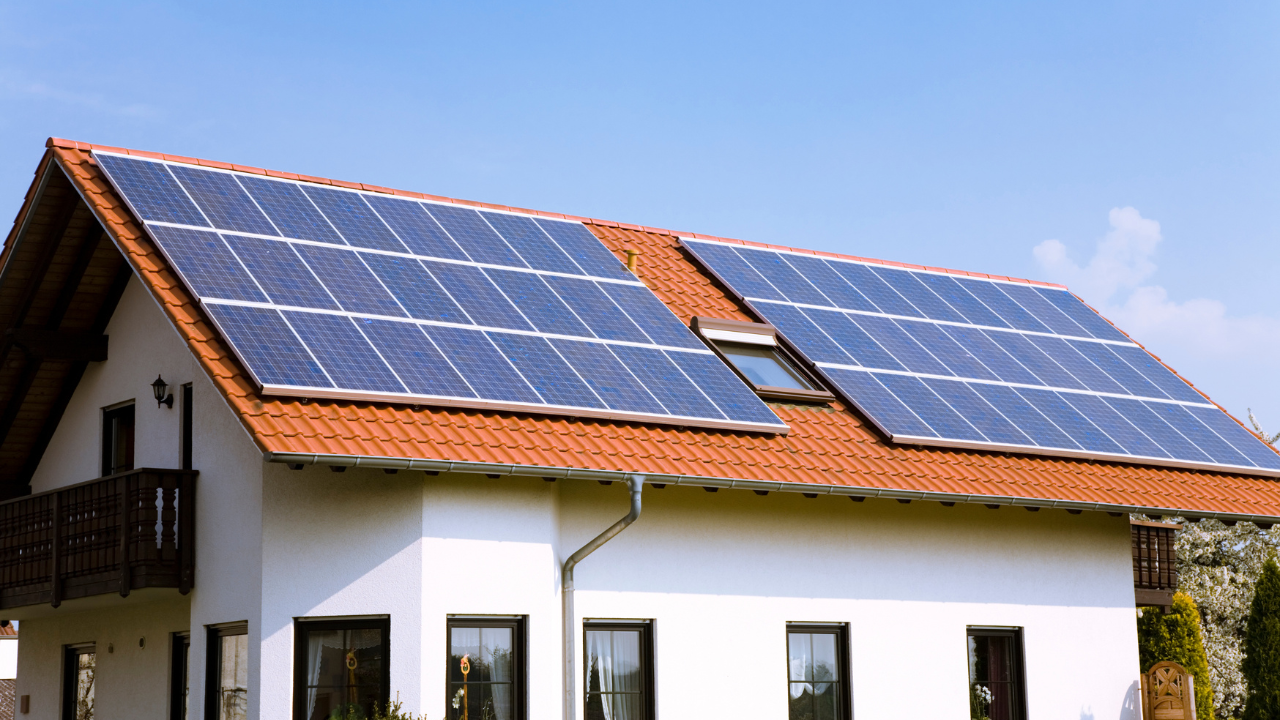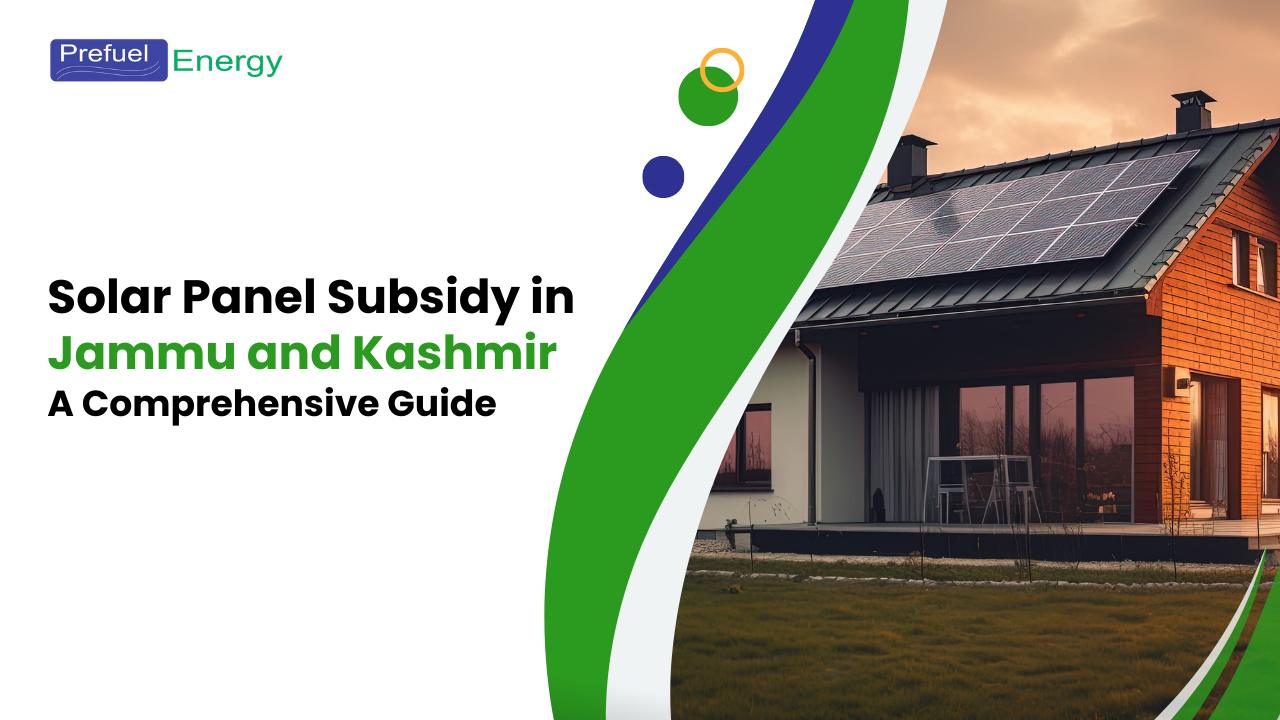Jammu and Kashmir (J&K) is recognized as one of the richest solar states in India, boasting an impressive average of 2,218 hours of sunlight per year. This makes it an ideal location for solar power generation, despite its cooler climate. To promote the adoption of solar energy, the government of Jammu and Kashmir offers attractive subsidies for installing rooftop solar panels.
This article will delve into the details of Solar Panel Subsidy in Jammu and Kashmir, the components of a solar system, and how to apply for them.
Table of Contents
Understanding Solar Energy Potential in J&K
Solar Energy Advantage
The geographical location of Jammu and Kashmir provides ample sunlight, making solar energy a viable option for residents. The state receives an average daily sunlight duration of around 6 hours, which can be harnessed effectively through solar panels.
Benefits of Solar Energy
Here are the key benefits of solar energy in a concise format:
- Renewable and Abundant Resource: Solar energy is a renewable source that will not run out, unlike fossil fuels.
- Cost Savings: Solar panels can significantly reduce electricity bills by generating free energy from sunlight.
- Increased Home Value: Homes with solar panels installed can command a premium of about $15,000 on average.
- Environmental Benefits: Solar power generates no air pollutants or greenhouse gas emissions during operation, reducing the carbon footprint.
- Low Maintenance Costs: Solar panels have no moving parts and require minimal maintenance, with an average lifespan of 25 years.
- Versatility: Solar energy can be used for various applications, including heating water, powering vehicles, and providing electricity in remote locations.
- Job Creation: The growth of the solar industry leads to job creation in manufacturing, installation, and maintenance.
- Energy Independence: Generating your own electricity reduces dependence on utility companies and protects against fluctuating energy prices.
- Technological Advancements: Solar technology continues to improve in efficiency and cost-effectiveness, making it an increasingly attractive option.
- Sustainability: Investing in solar energy contributes to a sustainable future by reducing reliance on fossil fuels and promoting clean energy
Components of a Solar System
A typical solar power system consists of several key components:
1. Solar Panels
Solar panels are the heart of any solar system. They are made up of photovoltaic cells that convert sunlight into electricity. Various types include:
- Monocrystalline Solar Panels: Known for high efficiency and longevity.
- Polycrystalline Solar Panels: Generally more affordable but slightly less efficient.
- Bifacial Solar Panels: Gaining popularity for residential use due to their ability to capture sunlight from both sides.
2. Solar Inverter
The solar inverter converts direct current (DC) generated by the panels into alternating current (AC), which is used by most household appliances. Common sizes include 3KW, 5KW, 8KW, and 10KW.
3. Solar Batteries (Optional)
Solar batteries store excess electricity generated during sunny periods for use during cloudy days or at night. This is particularly beneficial in areas with unreliable grid power.
4. Mounting Structure
Solar panels must be securely mounted on rooftops or ground structures to ensure they are positioned correctly to receive maximum sunlight.
5. Charge Controller (if using batteries)
A charge controller regulates the flow of electricity to and from the batteries, preventing overcharging and prolonging battery life.
6. Wiring
Proper wiring connects all components safely and efficiently, transporting electricity from the solar panels to the inverter and then to your home or the grid.
Also read: What are the Main Components of Solar Panel?

Types of Rooftop Solar Systems

On-Grid Solar System
An on-grid system is connected to the electricity grid, allowing users to reduce their electricity bills by up to 80%. Additionally, homeowners can sell excess electricity back to the grid through net metering.
Off-Grid Solar System
Ideal for remote areas or places with frequent power cuts, off-grid systems include batteries to store excess power for use when sunlight is not available.
Hybrid Solar System
Combining features of both on-grid and off-grid systems, hybrid systems provide backup power during emergencies while also allowing users to save on electricity bills.
Also read: Understanding Different Types of Solar Panels
Apply Now For Solar Panel Subsidy Scheme in J&K
Solar Panel Subsidy Scheme in J&K
The government offers both central and state subsidy schemes for installing rooftop solar systems:
Central Government Subsidy Scheme
Under this scheme, known as Direct Bank Transfer (DBT), subsidy amounts are directly transferred to customers’ bank accounts within 30 days after commissioning the solar system.
State Government Subsidy Scheme
For residential rooftop solar systems:
- 40% subsidy for systems up to 3 kW.
- An additional 20% subsidy for systems over 3 kW up to 10 kW.
To avail of this subsidy, homeowners must register with the Jammu and Kashmir Energy Development Agency (JAKEDA), which oversees the implementation of solar energy projects in the state.
Example Table: Subsidy Amounts
| Capacity | Central Subsidy | State Subsidy |
|---|---|---|
| 2 KW | ₹29,176 | ₹29,176 |
| 3 KW | ₹43,764 | ₹43,764 |
| 4 KW | ₹51,058 | ₹51,058 |
| 5 KW | ₹58,352 | ₹58,352 |
| 6 KW | ₹65,646 | ₹65,646 |
| 7 KW | ₹72,940 | ₹72,940 |
| 8 KW | ₹80,234 | ₹80,234 |
| 9 KW | ₹87,528 | ₹87,528 |
| 10 KW | ₹94,822 | ₹94,822 |

How to Apply for a Solar Panel Subsidy
To apply for a solar panel subsidy in Jammu and Kashmir:
- Site Survey: Book an engineer visit through JAKEDA.
- System Capacity & Costing Analysis: Determine your needs based on your energy consumption.
- Purchase & Installation: Buy your chosen solar system and get it installed.
- Net Metering Application: Apply for net metering through JAKEDA.
- Receive Subsidy: After installation and inspection by JAKEDA, expect your subsidy amount within 30-90 days.
Conclusion
Installing a solar system in Jammu and Kashmir can significantly reduce your electricity bills while contributing to a cleaner environment. With attractive subsidies available from both central and state governments, transitioning to solar energy has never been more accessible.
If you’re considering making this switch, contact JAKEDA for more information on how you can benefit from these subsidies and start enjoying the advantages of solar power today!


